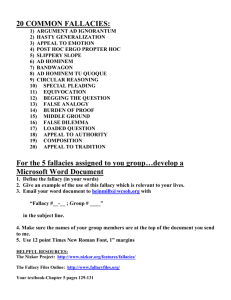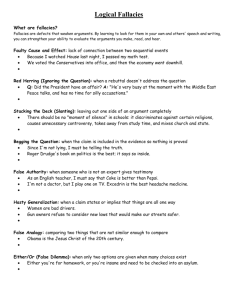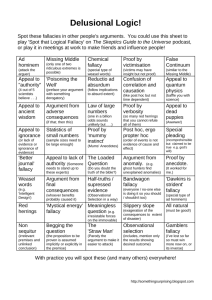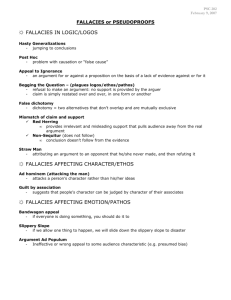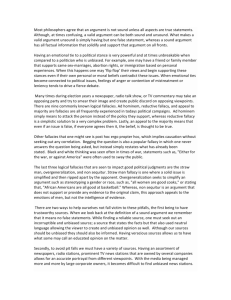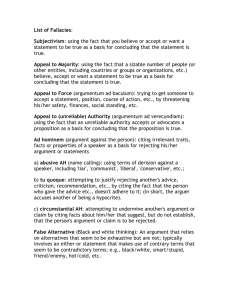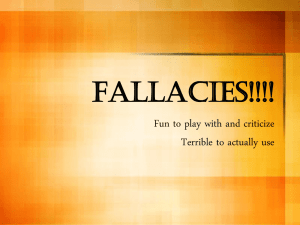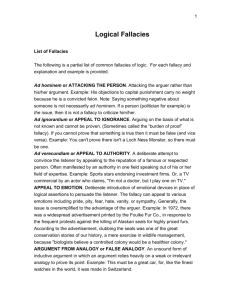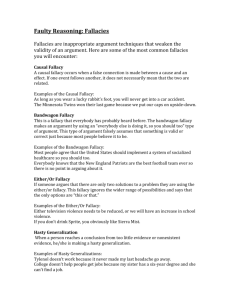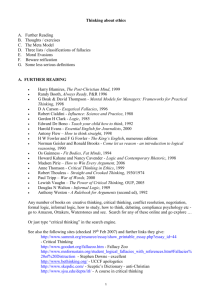Logical Fallacies - The Centre for Teaching and Learning
advertisement
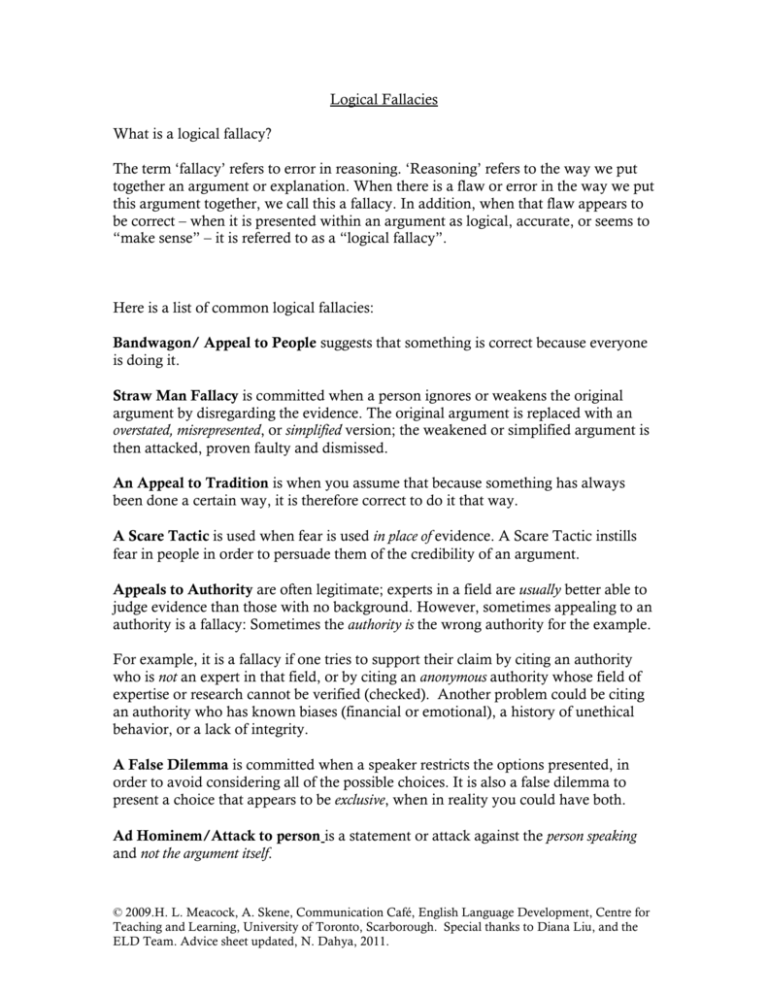
Logical Fallacies What is a logical fallacy? The term ‘fallacy’ refers to error in reasoning. ‘Reasoning’ refers to the way we put together an argument or explanation. When there is a flaw or error in the way we put this argument together, we call this a fallacy. In addition, when that flaw appears to be correct – when it is presented within an argument as logical, accurate, or seems to “make sense” – it is referred to as a “logical fallacy”. Here is a list of common logical fallacies: Bandwagon/ Appeal to People suggests that something is correct because everyone is doing it. Straw Man Fallacy is committed when a person ignores or weakens the original argument by disregarding the evidence. The original argument is replaced with an overstated, misrepresented, or simplified version; the weakened or simplified argument is then attacked, proven faulty and dismissed. An Appeal to Tradition is when you assume that because something has always been done a certain way, it is therefore correct to do it that way. A Scare Tactic is used when fear is used in place of evidence. A Scare Tactic instills fear in people in order to persuade them of the credibility of an argument. Appeals to Authority are often legitimate; experts in a field are usually better able to judge evidence than those with no background. However, sometimes appealing to an authority is a fallacy: Sometimes the authority is the wrong authority for the example. For example, it is a fallacy if one tries to support their claim by citing an authority who is not an expert in that field, or by citing an anonymous authority whose field of expertise or research cannot be verified (checked). Another problem could be citing an authority who has known biases (financial or emotional), a history of unethical behavior, or a lack of integrity. A False Dilemma is committed when a speaker restricts the options presented, in order to avoid considering all of the possible choices. It is also a false dilemma to present a choice that appears to be exclusive, when in reality you could have both. Ad Hominem/Attack to person is a statement or attack against the person speaking and not the argument itself. © 2009.H. L. Meacock, A. Skene, Communication Café, English Language Development, Centre for Teaching and Learning, University of Toronto, Scarborough. Special thanks to Diana Liu, and the ELD Team. Advice sheet updated, N. Dahya, 2011. A Red Herring attempts to distract the audience from the relevant issue by introducing a nonrelated or trivial argument. A False cause is when one improperly concludes a cause and effect relationship among related items. A Hasty Generalization is committed when a general conclusion is made based on an inappropriately small sample or body of evidence. Circular Argument/Begging the Question is when someone concludes their argument with the original statement he/she began with. Usually, we apply reason in order to work through a problem and arrive at new conclusion or increase our degree of certainly about our evidence. A circular argument bases its conclusion on material assumed as true in the original claim. An Appeal to the Select Few is an example of an Appeal to the People, but it is the opposite of a Bandwagon Fallacy. Snob Appeal suggests that something is correct because the select few or the elite are doing it. Slippery Slope Arguments are not always fallacies, but they are fallacies when it is falsely presumed (thought) that the original action will necessarily lead (either empirically or logically) to the undesired result. The Appeal to Ignorance logical fallacy uses a lack of evidence to support a claim. Since there is no conclusive evidence to the contrary, the arguer claims that their conclusion is correct and should be accepted. Additional Resources: Dowden, B. (2010) “Fallacies”. Internet Encyclopedia of Philosophy: A peer-reviewed academic resource. California. Retrieved online on January 24, 2011 from, http://www.iep.utm.edu/fallacy/#H6 Groarke, L.A. & Tindale, C.W. (2008). Good Reasoning Matters!: A constructive approach to critical thinking. London: Oxford University Press. © 2009.H. L. Meacock, A. Skene, Communication Café, English Language Development, Centre for Teaching and Learning, University of Toronto, Scarborough. Special thanks to Diana Liu, and the ELD Team. Advice sheet updated, N. Dahya, 2011.

